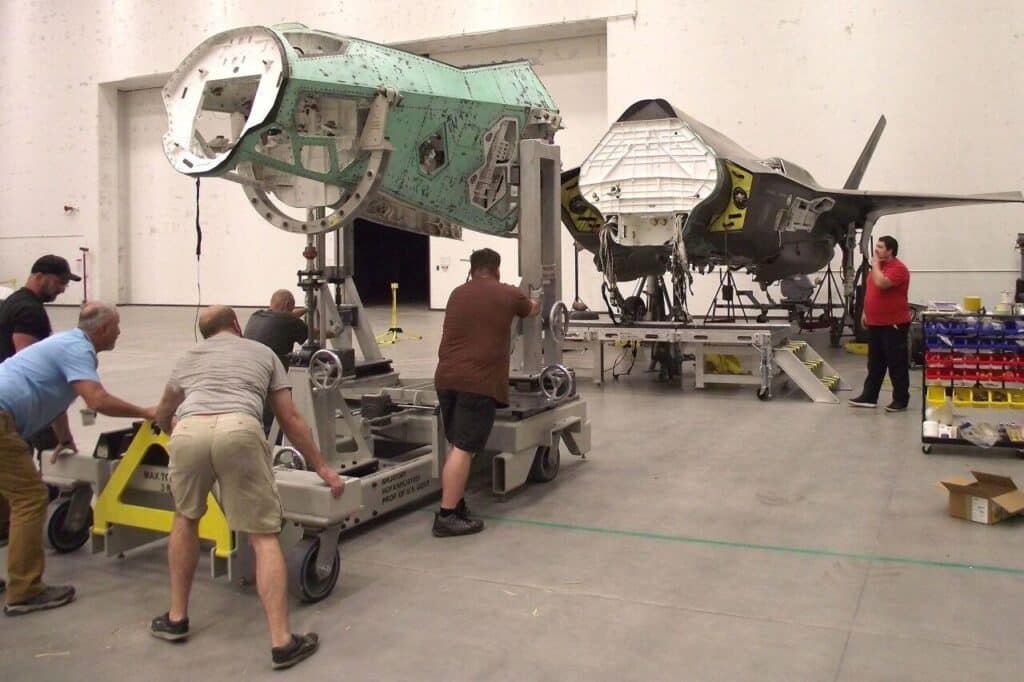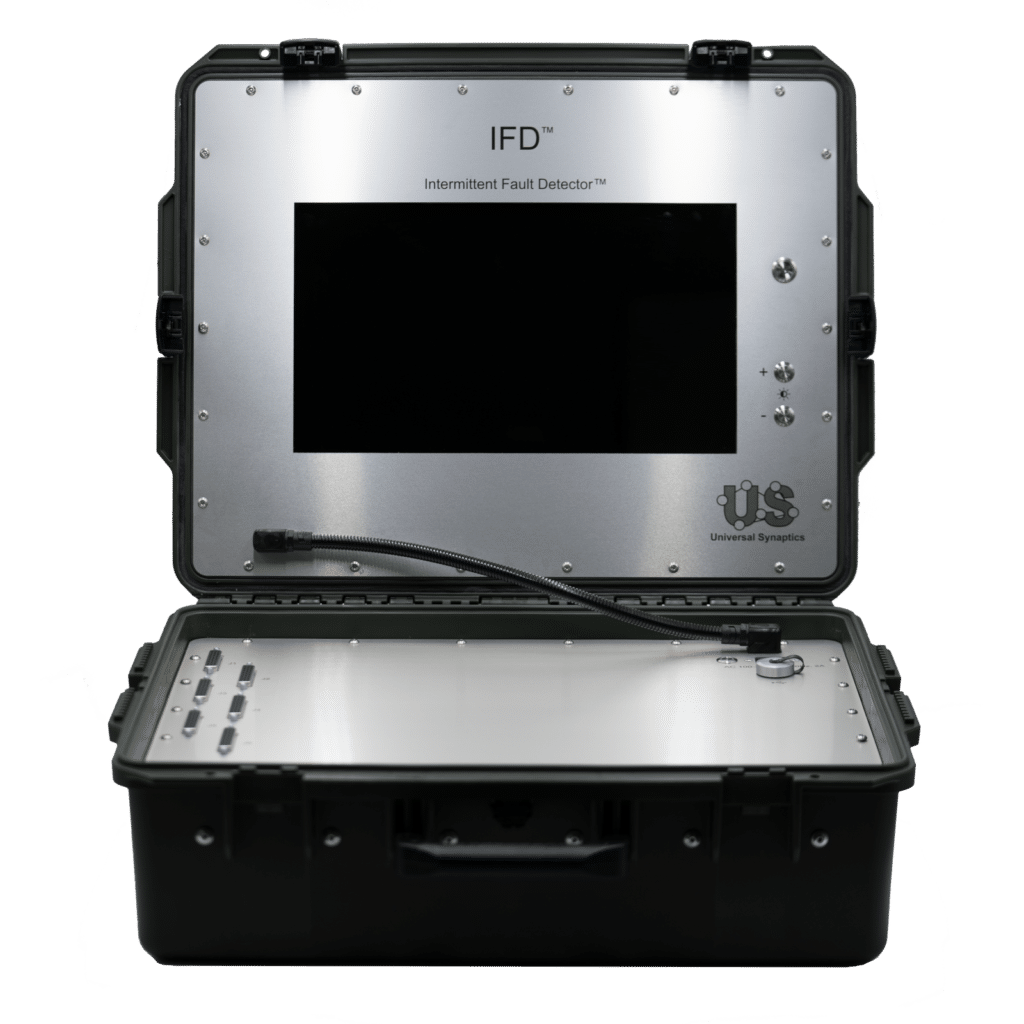
FOR IMMEDIATE RELEASE
NEWS RELEASE
For more information
PH: +1 801.710.1618
EM: contact@usynaptics.com
The Portable Intermittent Fault Detector™ (PIFD™) Assists in Saving U.S. Taxpayers $63 Million Dollars
Ogden, Utah – May 19, 2025 – Universal Synaptics, the global leader in detecting and isolating elusive electrical intermittent faults that cause No Fault Found (NFF) test results, announced today that the Portable Intermittent Fault Detector (PIFD) was utilized in bringing “Frankenjet” to life for the United States Air Force.
The United States Air Force (USAF) calls it the “Frankenjet” – a stealth fighter stitched together from the parts of two F-35s damaged in accidents that is now on duty and combat-ready. “Frankenjet” is fully operational and ready to support the warfighter, a report from the military’s F-35 Joint Program Office (JPO) stated.
The recycled F-35s trace back to AF-27 and AF-211, both of which had sustained damage, making both aircraft inoperable. However, the recoverable parts presented an opportunity that had not been done before.
Pieces of a fractured engine rotor arm “cut through the engine’s fan case, the engine bay, an internal fuel tank, and hydraulic and fuel lines before exiting through the aircraft’s upper fuselage,” an investigation concluded. The resulting fire burned the rear two-thirds of the fighter jet, it said.
Then, on June 8, 2020, the nose landing gear on another F-35A, known as AF-211, failed on landing at Hill Air Force Base in Utah, resulting in severe damage to that aircraft, according to reports on the incident.
The Air Force was then left with two usable pieces of $75 million fighter jets – the nose of AF-27 and the rear of AF-211.
“Rather than writing off both jets as a loss … teams made a bold decision in 2022 to remove the nose from AF-27 and put it onto AF-211 to maximize savings and add back an operational aircraft to the fleet,” a report from the F-35 JPO said.
Scott Taylor, lead mechanical engineer for manufacturer Lockheed Martin, put the effort in perspective in a 2023 news release. “All of the aircraft sections can be de-mated and re-mated theoretically, but it’s just never been done before,” Taylor said. “This is the first F-35 ‘Frankin-bird’ to date. This is history.”
The work was done at Hill AFB, with entirely new, unique specialized tooling, fixtures, and equipment, including the Portable Intermittent Fault Detector (PIFD).
The PIFD AutoMap feature was utilized to map in real time the as-wired configuration of over 30 wiring systems and sub-systems to ensure these new systems met engineering and technical data requirements. The PIFD was then used to test the wiring systems for any latent intermittent defects before installing them into “Frankenjet”.

US Air Force via CNN Newsource. Hill Air Force Base, Utah, the reposition of a salvaged nose section from an F-35 airframe using a new Mobil Maintenance System in October 2023.
Almost two and a half years of repairs paid off in January 2025, when Frankenjet flew for the first time, from Hill AFB to Lockheed Martin’s F-35 facility in Fort Worth, Texas.
“The rebuilt aircraft’s first flight was flown to the edges of the performance envelope, and it performed like it was fresh from the initial production line,” Jeffrey Jensen, the F-35A variant lead engineer, said in a press release.
Late last month, Frankenjet was flown back to Hill AFB and assigned to the 338th Fighter Wing, the same unit AF-211 had originally belonged to.
The military statement put the cost of the Frankenjet project at $11.7 million, saying it saved the Pentagon and taxpayers $63 million over the cost of a new replacement aircraft.
The F-35A is one of the three versions of the US military’s stealth fighter. The Marine Corps flies the F-35B – a short take-off, vertical landing aircraft – and the Navy flies the F-35C, designed for aircraft carrier operations.
F-35s have also become a popular choice for US allies and partners, with 20 other countries either flying or acquiring the jets, according to Lockheed Martin.
The PIFD achieved Authority to Operate (ATO) on the F-35 Global Program in 2020 and has been utilized on several challenging diagnostic issues, to include “Frankenjet”.
“Universal Synaptics is proud to have participated with our partner Lockheed Martin to restore this valuable warfighting asset back to the USAF,” said Kenneth Anderson, Universal Synaptics President & CEO. “Lockheed continues to leverage the most advanced maintenance and sustainment technologies to ensure weapon system readiness. It was an honor for our team to collaborate with the dedicated professionals at Lockheed Martin.”

The Portable Intermittent Fault Detector (PIFD)
Since 1996, Universal Synaptics Corporation, based in Ogden, UT., has been an industry leader in detecting and isolating elusive intermittent faults and spent years in the “trenches” researching and solving complex diagnostic and testing problems. Their research into the primary root causes of intermittent / No Fault Found (NFF) problems and the massive digital testing void that exists today with conventional scanning test equipment, led to the development of the patented Portable Intermittent Fault Detector (PIFD™), the Intermittent Fault Detection & Isolation System 2.0 (IFDIS 2.0™), and the Intermittent Fault Detection & Isolation System (IFDIS).
For more information, contact Universal Synaptics at +1 801.710.1618
— END —